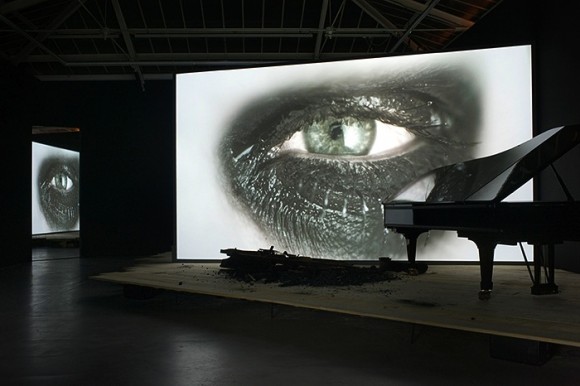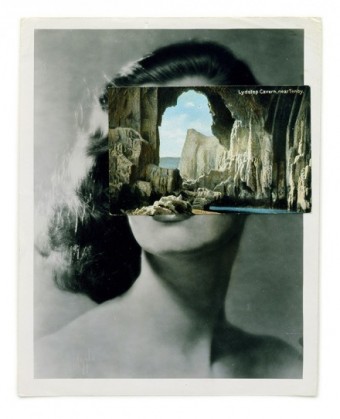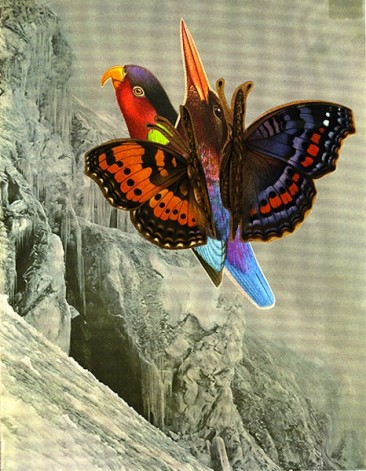Once again, the Biennale has taken over Sydney, adding hyper-excitement, colour and zing to a number of venues around our already zinging, parti-coloured city.
The 2014 Biennale curator, Juliana Engberg, has situated what she terms the festival’s more “liminal, libidinous and liquious” artworks at Circular Quay’s Museum of Contemporary Art, recognising that the works use “the psychological language and semiotics of Surrealism…”
The 2014 Biennale’s rallying cry “You imagine what you desire” already has more than a whiff of surrealism’s dreamy erotic perfume about it, and a surprising number of the MCA works, directly or indirectly, pay homage to surrealism.
Much of post-war Art has been the spiritual spawn of DADA, surrealism’s ADHD glue-sniffing sister. Late 20th century and current political realities, corporate barbarism and historical brutalities often call for that tougher-edged and punked-up response. But, away from the barricades people still dream, and people still love dreamily and there will always be a place in Art’s heart for surrealism.
Its poetry has been accused of being too often escapist, but the paradox of surrealism is that its escapism seems to drive further into our human reality than away from it. The best of it gets us right where we live, in our subconscious.
The works at the MCA of British artist John Stezaker achieve this mysterious soft shock with the barest of means. Taking nothing more than two photographs – usually a publicity still of a forgotten actor and a holiday postcard – and combining them at just the right point, Stezaker sets up some stunning dissonances of repulsion/attraction, beauty/horror, dream/reality.
They are reminiscent of Max Ernst’s early 20th century surreal collage novels such as The Hundred Headless Woman. However, where Ernst created complex, densely detailed images, Stezaker’s works seem almost randomly applied as if one photo came to rest on another in a pile, in the kind of ‘accident’ the surrealists loved.
Collage pops up again in the collaborative cut-and-pastes of Gerda Steiner and Jórg Lenzlinger in their series Souls. Images of flight – birds, insects, wings, propeller-like flower petals – float in cluster over pastoral landscapes. The images have been cut from natural history books and are illustrations; the backgrounds are landscape photographs: the effect is dislocating and dreamlike. Eroticism pants from the wings; Ernst et al would be well pleased.
The surrealists also loved madness and extreme eccentricity. One god of their swirling Pantheon was Le Facteur Cheval. This postman built his ‘Ideal Palace’ in his garden over 33 years (completed 1912) from odd-shaped volcanic rocks, wire, wood and other junk. The aesthetic was old-world glory – palaces, tombs, mosques, minarets – the effect was a swirling mash-up of styles and architectural references so incongruous it could only be beautiful.
Belgian photographer Aurélien Froment, in his series Tombeau de Ferdinand Cheval, has chosen not to shoot wide shots of the postman’s palace, instead concentrating on small elements – a face, an animal head, some lettering – often separated out by draping black cloth around the object. It’s a smart move as, in toto, it gives you an insight into Cheval’s view as he built this edifice one stone at a time.
Other works here may be less intentionally – even accidentally – surreal but their dreamlike nature and alien/familiar dissonance evokes a similar sense of reality shift.
As in a dream, the burnt remains of a Steinway on a stage side by side with an intact grand piano in Douglas Gordon’s “Phantom” installation seem quite natural. A huge, heavily mascaraed eye beams down upon the whole operatic scene like the slit eyeball in Luis Buñuel’s “Un Chien Andalou”.
Belgian artist David Claerbout’s The Quiet Shore – a series of black and white images projected in a darkened room – is so deeply nostalgic it seems you are dreaming someone else’s sad seaside childhood holidays. The highly polished floor – like wet seashore sand – both reflects the images and, since you are standing on it, puts you in the picture, draws you into the dream.
These waking dreams, of course, are not all the Biennale has to offer, yet it is gratifying to see surrealism’s milky poetry, draperies and moonlight return to the conversation of Art. And interpreted with a contemporary twist, these artists show it still packs the same lovers’ punch it always has.
The 19th Biennale of Sydney runs until June 9, 2014 at venues across Sydney.







